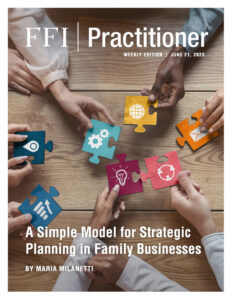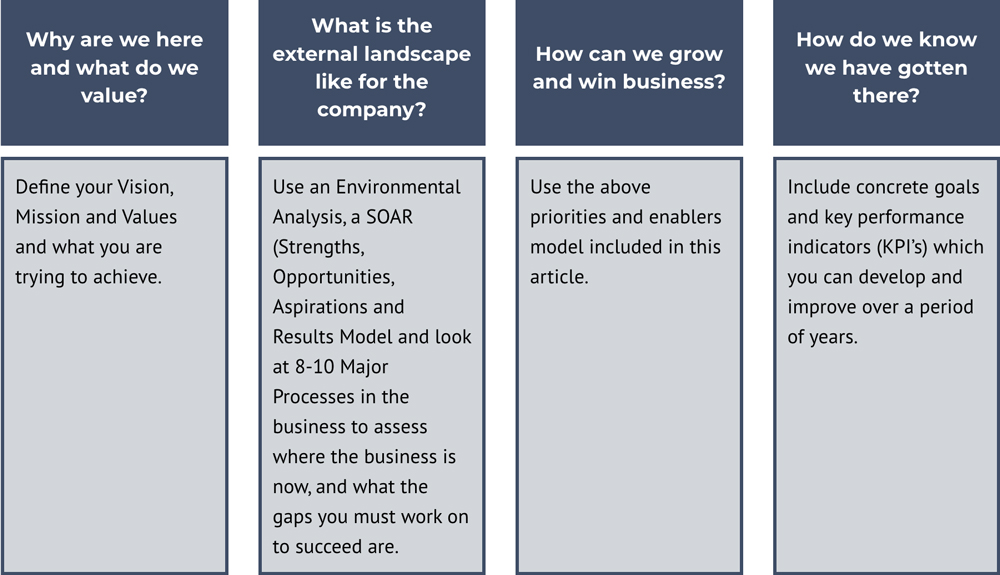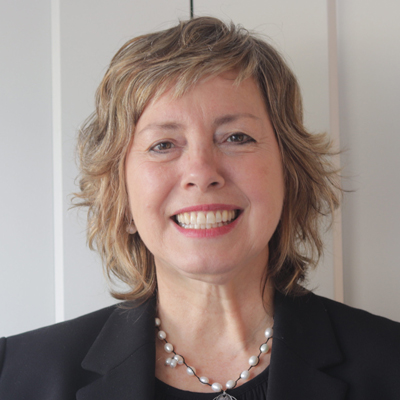
View this edition in our enhanced digital edition format with supporting visual insight and information.
Thank you to this week’s contributor, Maria Milanetti, for her article that presents a simplified model for engaging family enterprise clients in an efficient strategic planning process. In her article, Maria provides an overview of the model as well as sample to illustrate the strategic planning process.
Most family businesses struggle to survive beyond a single generation. Strategic Planning – for both business and family – can help to strengthen the family enterprise and extend its lifespan.
– John L. Ward
There have been many studies that speak to the value of strategic planning within businesses as an indicator of more and greater success. John L. Ward, mentioned above, did research with family businesses in 1987, over 36 years ago, that still holds true. Ward tracked companies from the 1920s and studied their progress over a period of 60 years. Through this analysis, he uncovered that planning, adapting, and the ability to change within these businesses appeared to be indicators of greater success and business longevity.
Ward’s research helps to show that many owners seemed to lack a conceptual framework to be able to assess their company and plan for its future. If, however, they embrace the idea of strategic planning, his research shows us that the owners were better able to renew and regenerate their businesses.
Family enterprise practitioners and owners typically recognize that first-generation family businesses, often started by the classic entrepreneurial “founder” personality, generally tend to grow organically and according to the founder’s interests and strengths.
The results of Ward’s study may also reflect the belief by founders that long-term planning for the business and its ownership can be too formal and inflexible. It often isn’t until leadership transitions to the second generation that we find a greater interest in more structured strategic planning. In some cases, it is not until the third generation that the family and the business embrace such planning.
As a corollary, when I first entered this field in Toronto, Canada, I joined the local small business organization called the Canadian Federation of Independent Business (CFIB). It was there that I learned the statistics at the time, which indicated that only 10% of independent business owners had a written strategic plan, 40% of independent business owners had a plan “in their heads,” and 50% had only a year-to-year operating plan guiding them. Of course, the larger the business, the more likely it was to have a long-term plan.
Through my work with enterprising families, I have noticed several factors that help to promote strategic planning in an early generation family business. One factor is if the founder has come from a background in large organizations, where planning is more the norm. Another factor is if the founder or second generation have a background, training, or education in business strategy. These two groups seem much more open to the idea of strategic planning and are therefore willing to take the time to work “on the business” as well as “in the business” in a meaningful way.
Suggestions for a practical approach to strategic planning
Family business owners often want a simple and understandable model for strategic planning, to make efficient use of the limited time available to work on their businesses. To match this need for expediency, I have simplified this planning model over time and taken lessons from other industries.
This model starts with the goal for business owners to come out of the planning process with three to four large priorities (these are the main areas of emphasis for the business as a whole) and two to three enablers (these relate to the core structure of the business and how the identified priorities will be implemented). This format is designed to be easily understandable and accessible to all. To illustrate, below is an example of this approach.
This sample strategic plan summary, based on a composite of industries and businesses, includes the following four corporate priorities:
- Sales and Business Development or Customer Attraction
- IT and Technology
- Building Culture and Strategy
- Succession Planning
Enablers, which can be key personnel, departments, and internal processes, are generally viewed as businesses’ foundations and many of these enablers tend to be similar in organizations regardless of size or industry. In this example, the key enablers include:
- The Finance Department
- Human Resources/People Practices
- Quality and Process Enhancement

When starting the strategic planning process, I take the most senior group of leaders through the exercise first, ahead of the larger group, to ensure that there are no surprises. We then examine the 8-10 most important processes within the business and conduct an analysis on these processes using a SOAR Model (Strengths, Opportunities, Aspirations and Results) to assess the requisite parts of the business. From that starting point we spend our first half-day of planning, to see some of the strengths and gaps in the business that will lead us to set three to four priorities that are key to future growth and success.
Additional considerations for family enterprise strategic planning
Of course, there is always the need for “setting the table” before any structured planning can happen.
Ward refers to the following four questions in his 1988 article. It is just as important now as it was then to spend sufficient time with the family to help them to understand and develop family alignment around the answers to each:
- Why is the family committed to continuing the business?
- How does the family see itself and the company in the years ahead?
- How will the family build or maintain strong relationships, including things like competition with one another in the business?
- What steps are specific steps to accomplish the family’s professional and personal goals?
Getting to know a family is the prerequisite to working properly with them—answering the first three questions is key to that. By the time advisors discuss the fourth question with their client, they should be in a good position to help the family accomplish their goals.
When working with a family enterprise client to develop a strategic plan, it is important to involve family leaders and key members of the business’ leadership team in the process, so the entire enterprise owns and can effectively implement the central plan within the business.

References
Stavros, J., Cooperrider, D., & Kelley, D.L.. (2003, November). Strategic Inquiry Appreciative Intent: Inspiration to SOAR: A New Framework for Strategic Planning. AI Practitioner. It has since been updated. https://aipractitioner.com/product/ai-practitioner-november-2003/
Appreciative Intent: Inspiration to SOAR: A New Framework for Strategic Planning. AI Practitioner. It has since been updated. https://aipractitioner.com/product/ai-practitioner-november-2003/
Ward, J.L. (1988). The Special Role of Strategic Planning for Family Businesses. Family Business Review, 1(2). 105–117. https://doi.org/10.1111/j.1741-6248.1988.00105.x
Kotak, N. (2015, March 2). Strategic Planning: Demystifying the Complexity—A Guest Blog by Neha Kotak. MarchFifteen Consulting. https://www.marchfifteen.ca/strategic-planning-demystifying-the-complexity-a-guest-blog-by-neha-kotak/
About the Contributor

Maria Milanetti, ACFBA, is a partner at MarchFifteen Consulting, an executive coach, and a senior HR and organizational development and management consultant with over 20 years of expertise in management and senior leadership. Heading the Family and Independent Enterprise Services Practice at MarchFifteen, Maria specializes in helping leaders to take their business to the next level of accomplishment. She has worked extensively with organizations in different industries as an executive and a consultant on team and individual development mandates, as well as on their strategic planning and tracking efforts. She can be reached at mmilanetti@marchfifteen.ca.

View this edition in our enhanced digital edition format with supporting visual insight and information.





